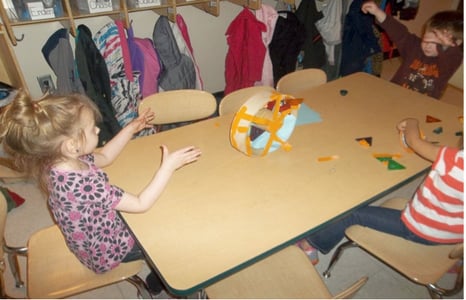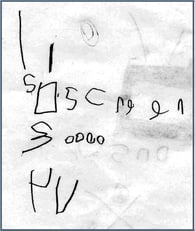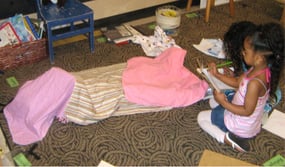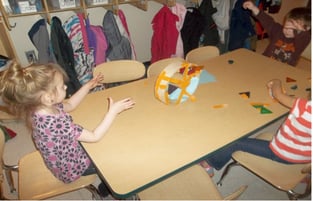
In her last blog post, Carol Bolz introduced a research project on coaching with CLASS Instructional Support and the Project Approach. There were many great examples about how the teachers used what they had learned to engage their students. We’d love to hear from you. How have you helped a teacher build these Instructional Support interactions? How have you, as teachers, encouraged these types of learning experiences?

How do you create a TV?
One teacher engaged a child in a lengthy feedback loop about the creation of a television during a class project on their houses. Before completing the construction, he planned by listing four steps:
- Paint the box black.
- Draw the screen.
- Draw the buttons.
- Make antennae.
Babies and Blankets

In the first phase of a project on babies, a child reminisced that when she was a baby, you could cover her all up with a blanket. After thinking with her coach, the teacher responded by encouraging the child to share her story with all of the children and engaging them in non-standard measurement with baby blankets. For several days, the children estimated how many blankets were needed to cover babies, preschoolers, and adults as well as objects. They experimented, evaluated their estimations, and recorded their findings.
What’s Inside this Ball?
When a group of children investigated balls, they had many opportunities to explore, handle play with, and compare all types of balls. With help from a father, they cut balls open to find what was inside. One child decided to create an observational drawing of a soccer ball. His teacher watched as he counted the number of black shapes on the ball and determined that there were twelve shapes. The child then went repeatedly to the Math Center, returning each time with a shape card and comparing it to the twelve black shapes until he identified the black shapes as pentagons. He created his drawing and asked his teacher for support with writing “12” and “Soccer ball.”
Wheels
 A group of children were studying cars and three of them became particularly interested in wheels. One of their parents brought in a wheel for the children to explore. Together, the three children created a detailed drawing of the wheel. Their teacher asked if there was any other way they could create a wheel, and they constructed one from blocks and manipulative toys. The teacher then asked if their wheel was functional. With very little support from the teacher, the three children worked together to transform their wheel into one that would actually roll.
A group of children were studying cars and three of them became particularly interested in wheels. One of their parents brought in a wheel for the children to explore. Together, the three children created a detailed drawing of the wheel. Their teacher asked if there was any other way they could create a wheel, and they constructed one from blocks and manipulative toys. The teacher then asked if their wheel was functional. With very little support from the teacher, the three children worked together to transform their wheel into one that would actually roll.
Summary
In each case, children were at the center of discussing, generating questions, investigating, representing discoveries, and evaluating results. Teachers, coaches, families, and most important the children themselves, were coming to understand how capable they were as thinkers.
References
To read further about the 5-year research project on coaching with CLASS Instructional Support and the Project Approach, follow this link to an article in Early Childhood Research & Practice. http://ecrp.uiuc.edu/v16n1/vartuli.html
Links to websites and on-line journals related to the Project Approach follow:
- The Illinois Projects in Practice website: http://illinoispip.org
- Project Approach website founded by Dr. Sylvia Chard: www.projectapproach.org
- Website for Best Practices begun by Dr. Judy Harris Helm: www.bestpracticesinc.net
- Early Childhood Research & Practice edited by Dr. Lilian G. Katz: http://www.ecrp.uiuc.edu
The blog was authored by the Coaching Community of Practice from Mid-America Head Start. Education support staff from The Y of Greater Kansas City, Kansas City Public Schools, The Family Conservancy, Independence School District, Operation Breakthrough, St. Mark’s United Inner City Services, and Plaza de Niños have been involved in coaching with CLASS Instructional Support Domain and the Project Approach with support from Drs. Catherine Wilson and Sue Vartuli for the past seven years.

